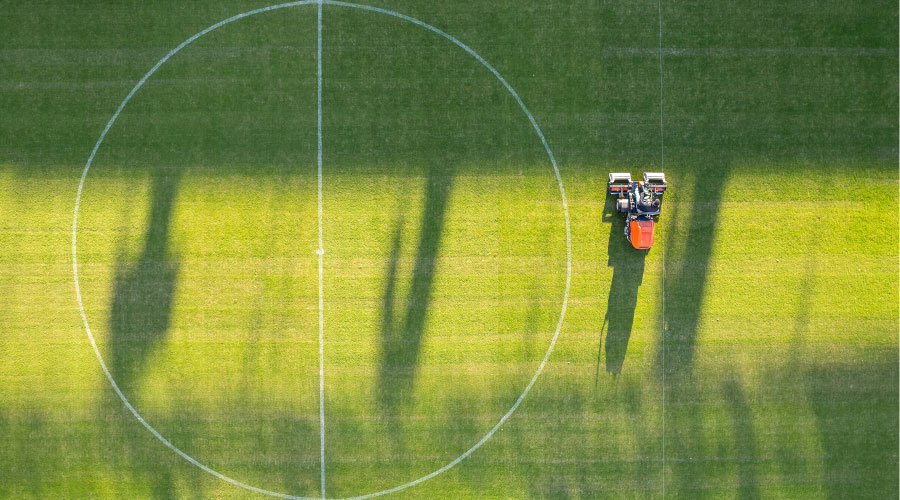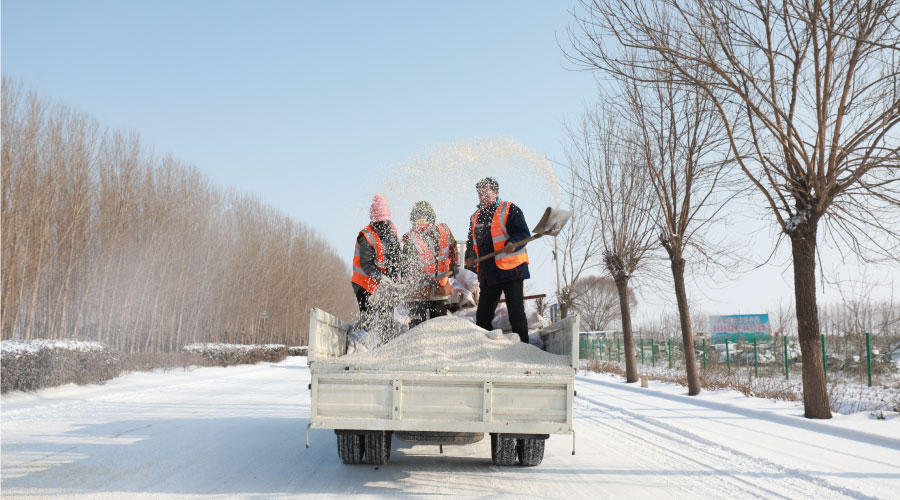Grounds Care: Designing for Maintenance
Getting involved in landscape design early can prevent problems down the road
A new landscape starts life with a great deal of optimism, but too often, within days of the opening festivities, grumbling starts among those maintaining the site. A successful landscape meets the needs of the occupants, is attractive, and can be efficiently and affordably maintained as designed. Most landscapes meet the first two criteria but not the third.
Why? Traditionally, architects and landscape architects meet with site owners and contractors, but they generally don’t meet with those whose responsibility is to keep the landscaped area looking its best.
To prevent long-term problems, managers can become involved during the design and construction phases, point out problems related to grounds care, and offer solutions that save money on long-term maintenance.
Project Involvement
Ideally, grounds managers would be involved throughout the design and construction phases. But if managers encounter resistance to their involvement, they need to be ready to give concrete examples of past poor designs, actual dollars spent to remedy the faults, and options that would have prevented the problem.
Managers who invite themselves to design meetings should let it be known that they are only interested in seeing the project succeed. Grounds care managers generally have no interest in trying to design, but they can bring experience to the discussion, as well as local knowledge on how specific plants perform.
At the very least, managers should be able to review and redline each stage of the design process. For example, the can suggest possible alternate plant varieties that are less susceptible to frost damage or that can handle heavy traffic or abuse.
Often, organizations bring in a landscape architect from a national firm who might be unfamiliar with local conditions. Managers should look at the design and bring up possible concerns about:
-
garbage or recycling vehicle access
-
the ability to remove snow without damaging plants or hardscapes
-
possible problems with building overhangs and plants drying out during winter without irrigation
-
plants located too close to lights or sidewalks, resulting in frequent pruning.
Managers also need to make sure the irrigation design and components line up with facilities’ long-range irrigation goals. Does the organizations sole-source one manufacturer or go with one controller over another? A review of tree and shrub planting details, sod specifications and conditions, and mulch requirements will help determine if they are appropriate for the area.
Changes in specifications and designs are easier at this phase and relatively inexpensive to make. Some revisions during design will mean higher construction costs, but managers can counter them with a cost-saving change, which exist on almost every project.
Landscape designs often are over-planted, which means more maintenance and problems. To prevent such problems, managers might suggest, for example, two rows of shrubs rather than three in a narrow planter to minimize pruning. The landscape might not look as full the first year or two, but it definitely will look better in the long run, require less maintenance, and cost less to install. The same goes for trees. A smaller tree costs less to plant, but it will catch up to or outperform a larger tree within a few years, due to less transplant shock.
Construction Considerations
The best design will not produce a beautiful landscape unless it is installed correctly. This phase also can benefit from maintenance involvement. Working closely with the design team, managers can note trees or other plants that should remain, and they can make sure there are detailed plans to protect and care for them during construction.
One essential task is ensuring clear guidelines about individual responsibilities during construction. For example, who is responsible for the irrigation of areas outside the construction zone that are fed by a system disrupted by the construction?
Managers should be familiar with the required grades, subsoil and topsoil qualities and quantities, and irrigation pipe depths. Taking pictures or videos of the area before construction starts and then during construction will help with monitoring these areas.
Attending preconstruction and progress meetings with designers, contractors and project managers will keep managers informed about expectations and the chain of command. Managers also can visit the site daily and inspect all activity, reporting any deficiencies or problems, such as cement trucks washing out in future landscape areas or other spills that will affect plant growth.
Managers should not shy away from being tenacious because they have a vested interest in the long-term success of the landscape. This role in some cases requires fighting for an improvement or change that might slow construction or require something to be redone. This role is essential, however, because most contractors and project managers are driven by a completion date and budget, and they understandably are not as interested in future plant performance.
Planting: A Closer Look
Landscape managers must be particularly vigilant during the final phase, planting. The project often is substantially completed by this time, and the building might even be occupied. Usually, there is a real desire to finish the project and move on to the next one. Some of the worst problems for future maintenance occur at this time.
For example, managers must make sure the ground is scarified to remove the compaction from construction before topsoil is added. They also must check to see that:
- topsoil is the specified quality and spread uniformly to the proper depth
- specified brands and pipe schedules are used in irrigation installations
- pipes are embedded in sand as required and that automatic drains installed and proper thrust blocks poured
- trees are not planted too deeply — a very common problem
- finish grades allow room for the specified amount of mulch without it being above grade, next to walks or turf.
Manages also need to ensure that the site is properly leveled before sod is laid. Rolling is not the answer to poor preparation.
Finally, pay attention to see that plants are the proper varieties and quality specified, and be involved in changes in plant material due to unavailability. Do not hesitate to reject any poor material. The response to such a request might be that the contractor provides a one-year warranty. If such cases, make sure to photograph the material.
Landscape Maintenance
Accepting the site to start maintenance should only occur after an inspection with the project manager, contractor, architect, and landscape manager. During the site inspection, managers should run the entire irrigation system through a test cycle to make sure heads are adjusted, nozzle sizes are correct, and no leaks or breaks occur.
Note any trees or shrubs that are questionable or dead, and review any concerns that arose during construction. Request as-built drawings of the irrigation system, wiring for outside lights or water features, and actual plant varieties installed.
Get a copy of the punch list, and follow it through on the end. Completing this step also is of greatest interest to managers because the other parties involved usually have moved on to new projects.
Once a department has taken over maintenance, it can be difficult to get a contractor back, so try to have any substantial punch list items completed before starting the maintenance. If a manager has had a positive influence on the outcome of the project, the cost and ease of maintenance should improve, and the landscape will be a success.
Beautiful landscapes help facilities create a favorable image, and landscape managers play a central role in upholding that image by participating in the design phase. Such participation also can bring them satisfaction and add credibility to their profession.
Ellen Newell, CGM, is assistant director of facilities management-grounds services at Arizona State University in Tempe. She also is president Professional Grounds Management Society.
Talking Design
Clear communication is essential for the success of any project, and landscape design is no exception. To achieve this goal, grounds managers can meet privately with landscape architects during the project to better understand the project’s design concept.
How do the architects want the project to look in the future? Is there a view they want to maintain? Are they looking for formal or informal pruning? Which trees or shrubs are designed to be removed as the landscape matures?
Knowing a designer’s intent makes planning for maintenance easier, and it shows the landscape architect respect, as well as the department’s interest in keeping true to the design. This tactic can be particularly valuable if managers work with the architects in the future.
— Ellen Newell
|
Related Topics:











